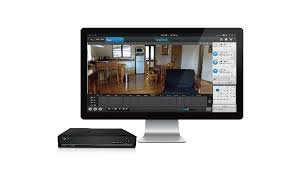DIFFERENT BETWEEN ANALOG PTZ and IP PTZ Camera
DIFFERENT BETWEEN ANALOG PTZ and IP PTZ Camera
Here's a breakdown of the key differences between analog PTZ and IP PTZ cameras:
Technology:
Analog PTZ: Uses coaxial cables to transmit analog video signals to a Digital Video Recorder (DVR) for recording and monitoring.
IP PTZ: Utilizes a network connection (Ethernet cable or Wi-Fi) to transmit digital video data to a Network Video Recorder (NVR) for recording and monitoring.
Image Quality:
Analog PTZ: Limited to standard definition (SD) resolution, resulting in lower quality footage with less detail for identification purposes.
IP PTZ: Offers superior image quality with high-definition (HD) or even 4K resolution, providing sharper and clearer images.
Scalability:
Analog PTZ: Adding new cameras requires complex and expensive cabling for each camera, making expansion difficult.
IP PTZ: Easier to expand the system by simply adding new cameras to the network.
Features:
Analog PTZ: Generally offers fewer features. Some models might have basic features like varifocal lenses and day/night functionality.
IP PTZ: Offers a wider range of advanced features, including:
Superior Night Vision: Better night vision range and clarity compared to analog cameras, utilizing advanced IR technology or starlight night vision.
Two-way Audio Communication (optional): Built-in microphones and speakers for interacting with visitors or deterring intruders.
Motion Detection with zones: More sophisticated motion detection with customizable zones and alerts.
Integration: Can integrate with other smart home devices or security systems for a more comprehensive solution.
Other Considerations:
Cost: Traditionally, analog PTZ cameras were cheaper. However, the price gap is narrowing as IP camera technology becomes more affordable.
Remote Access: Analog PTZ cameras typically require accessing footage from the DVR's location. IP PTZ cameras allow remote access through the network.
Future-proof Technology: IP PTZ cameras offer a more future-proof solution with greater potential for upgrades and integration with newer technologies.
Here's an analogy to simplify the concept:
Think of an analog PTZ camera as a basic flip phone with limited functionality and video quality.
Think of an IP PTZ camera as a high-tech smartphone that captures high-resolution videos and connects to the internet.
Similarity between analog PTZ and IP PTZ Camera
Despite the significant advantages of IP PTZ cameras, there are some similarities between analog PTZ and IP PTZ cameras:
Core Functionality:
Both offer PTZ (Pan-Tilt-Zoom) functionality, allowing you to remotely control the camera's movement for a wider field of view. You can pan horizontally, tilt vertically, and zoom in/out to focus on specific areas within the scene.
Both utilize remote control methods for adjusting the camera's view. This can be done through a joystick, keyboard, mouse, or mobile app (more common with IP cameras).
Both can be programmed with presets, allowing the camera to automatically move to predefined positions for quick monitoring of critical areas.
Basic Applications:
Both analog PTZ and IP PTZ cameras can be suitable for basic applications where monitoring a large area is required, such as:
Perimeter security: Monitoring fence lines, building entrances, or parking lots.
Traffic monitoring: Tracking vehicle movement in parking lots, access roads, or public areas.
Physical Appearance:
Both camera types often come in dome housings, offering a discreet aesthetic and some vandal resistance.
Weatherproof options are available for both analog and IP PTZ cameras for outdoor use.
While these similarities exist, it's important to remember that the advantages of IP PTZ cameras outweigh their analog counterparts in most situations.
In Conclusion:
While analog PTZ cameras might be slightly cheaper upfront, their limitations in image quality, features, scalability, and future-proofing make IP PTZ cameras a more attractive choice in most cases. They offer a significant long-term value for a robust and feature-rich security system. However, if budget is a major concern, consider exploring the market for used IP PTZ cameras for a more balanced approach.




Comments
Post a Comment